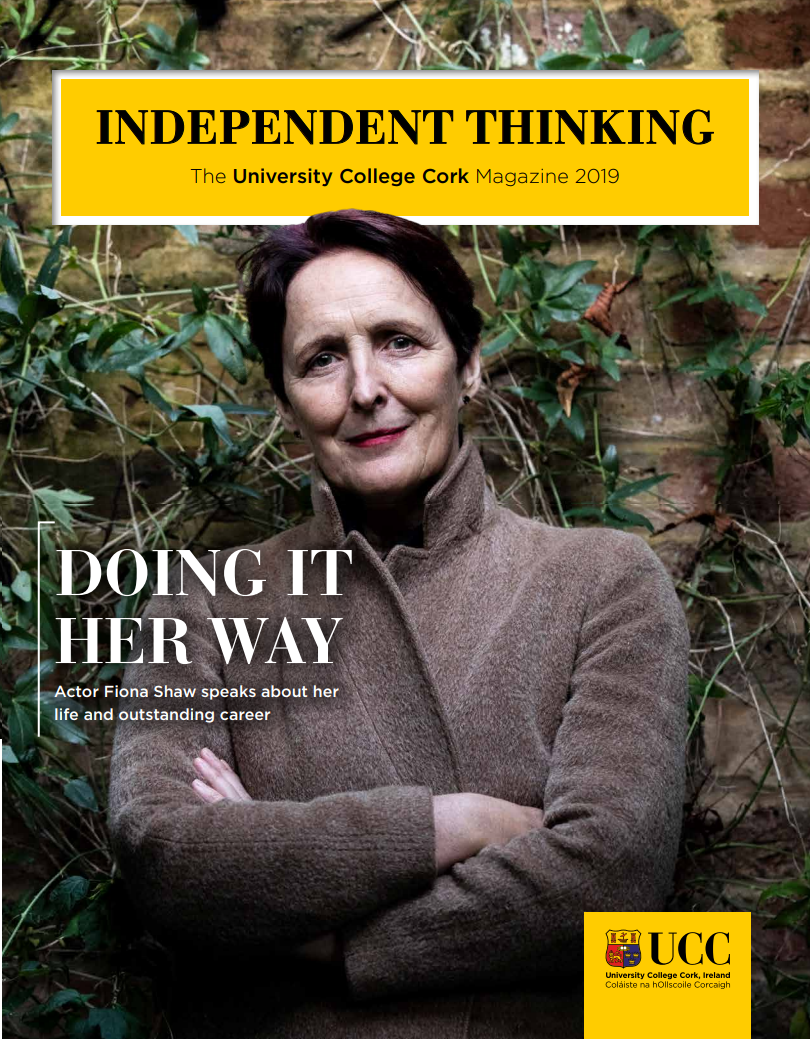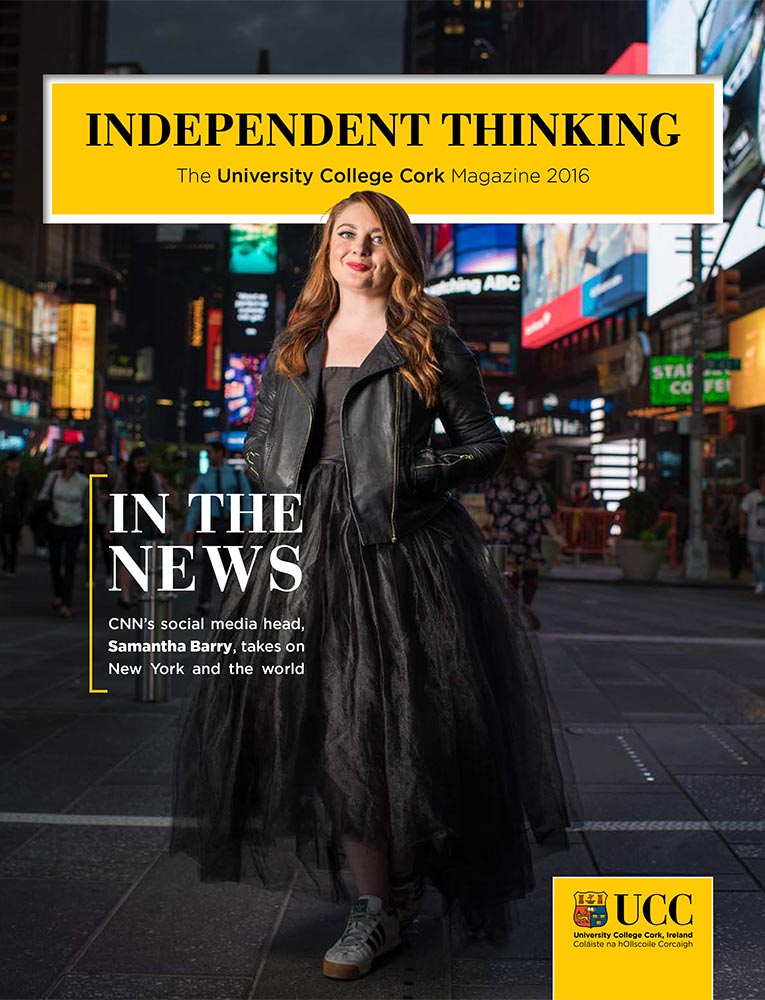Features
- UCC Springboard+: Kieran Egan
- UCC’s new Hub serves as ‘one-stop-shop’ service for 26,000 students
- Interview: Ryan Tubridy chats politics, history and his love of the arts on UCC visit
- UCC Emergency Care Society gets hands-on with life-saving skills
- Fitzgibbon Cup glory for UCC as hurlers beat IT Carlow in thrilling final
- GatewayUCC bridging the gap for research-entrepreneurs
- Pocket-sized brain injury monitor could be a game-changer for infant health
- Future of Irish hockey in safe hands with rising star Hannah
- Dr Eithne Hunt: Healthy habits for body and mind
- From Architecture to Web Development
- Nine APC Microbiome researchers make prestigious ‘highly cited’ list
- UCC honours five exceptional alumni at annual awards ceremony
- UCC spotlights four of its brightest up-and-coming female career scientists
- Rich Ferrie leads an exciting new era for UCC Innovation
- UCC honours its graduates with the official naming of the Alumni Bridge
- New UCC series explains how university research impacts daily life
- UCC's rising sports stars presented with scholarships
- UCC ranked among top universities in Europe for teaching excellence
Times Higher Education Europe Teaching Rankings 2019
- UCC makes Green Flag history…again!
The first university in the world to be awarded a fourth Green Flag
- Blazing a trail
Professor Helen Whelton charts her path to success, from curious dentistry student to global award-winner
- A Summer’s Evening on the Quad hits the right note for Cork charities
The fundraising event is now in its 14th year
- A curious mind
Paul Ross on his love of science, his greatest moments of discovery, and the exciting next chapter at APC Microbiome Ireland
- Mind your microbiome: 9 ways to boost your gut health
In honour of World Microbiome Day
- UCC hosts top wind energy experts at Cork’s largest ever conference
Scientists and engineers gathered to discuss the future of renewable energy
- Lord David Puttnam makes a passionate case for careers in the arts
He features in the latest episode of UCC’s podcast, Plain Speaking
- Funding announced for UCC SFI Research Centres
- Beekeeping makes life sweeter for Cork kids
- Saving Ireland's seals with GPS
- UCC celebrates a stellar year in sport
- Tommy Fleming headlines A Summer's Evening on the Quad
Tickets available now
- UCC ranked as global leader for sustainable social and economic impact
Times Higher Education University Impact Rankings
- Former UCC President Michael Murphy becomes first ever Irish President of EUA
Professor Murphy served as UCC President for 10 years
- MaREI researcher returns from epic adventure in search of blue whales
Dr Ailbhe Kavanagh spent seven weeks in Antarctica
- Doireann Ní Ghríofa among six new members elected to Aosdána at UCC ceremony
Writer Doireann is a UCC alumna
- Former White House drug advisor goes 'inside America’s opioid crisis'
Keith Humphreys is the latest guest on UCC's official podcast, Plain Speaking
- UCC launches Sports Strategy
Pride on our chest, belief in our heart, sport in our bones.
- How Nicole Ryan is powering change after tragedy
Alex’s Adventure
- Brainwave ‘donation’ research offers promise for dementia treatment
Research and innovation
- Full-circle for Paul as UCC extends partnership with Cork City FC
A perfect match
- Praise for The Irish Revolution as 'Atlas' documentary airs on RTÉ
Atlas of the Irish Revolution
- Pastures new
UCC launches its Food Institute
- Making waves at MaREI
Ireland's National Ocean Test Facility opens
- Research spotlight: APC Microbiome Ireland
10 researchers among Highly Cited
- Spin-out success
Atlantia Food Clinical Trials expanding stateside
- Billy Morgan: Pride of Cork
Marking a decade of UCC Sigerson Cup football
- The future is bright for soccer's Captain Fantastic
Ciara McNamara
- The next phase for rugby's rising star
Jack O'Sullivan
- RTÉ to air 'Atlas' documentary
The next step for the Atlas of the Irish Revolution
- Top business talent share their secrets to success
CUBS Conference 2019
- Green roots and flying boots: Cork Chamber project showcases ‘future’ of Cork
Future Forms is part of Cork Chamber’s 200th anniversary celebrations
- CEO and camogie star Mary O'Connor is leading change for women in sport
Moving the goalposts
- Mary Robinson is the first guest on UCC’s new podcast
Plain Speaking is now available to stream
Saving Ireland's seals with GPS
UCC researcher Cian Luck is using GPS tagging and tracking to support seal conservation in Ireland. He shares his research with Jane Haynes
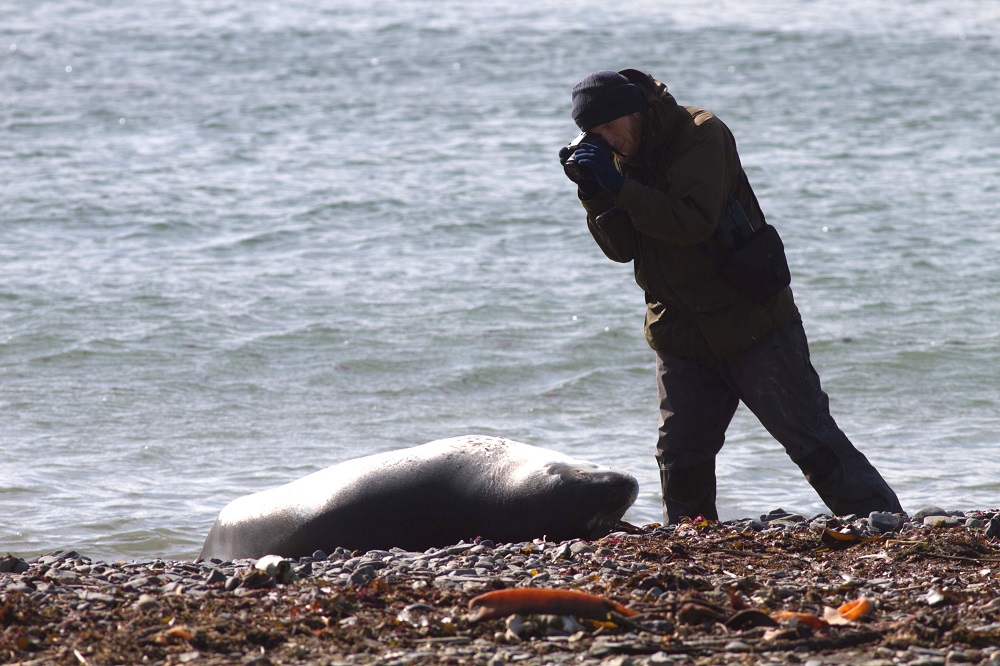
There is something about seals that seems to captivate us. On those occasions when they venture shore-bound, bobbing their slick heads above the water before dashing back below with the swish of their back flippers, it’s always for an audience.
While we may stop for a moment of appreciation of these magnificent creatures however, what many people may not be aware of, is just how important a role the seal plays in our ecosystem.
Cian Luck, a marine biologist at the SFI Centre for Marine and Renewable Energy (MaREI) and the School of Biological, Earth, and Environmental Sciences, whose PhD research centres upon the conflict between our seal population and fisheries industry, explains:
“Seals are what we call top predators or higher predators, and that means that they feed right at the top of the food web.
“Because they’re reliant on everything that happens underneath them, by studying them we can actually get an idea of how well the entire ecosystem is doing. So, they’re really important animals for us to be studying.”
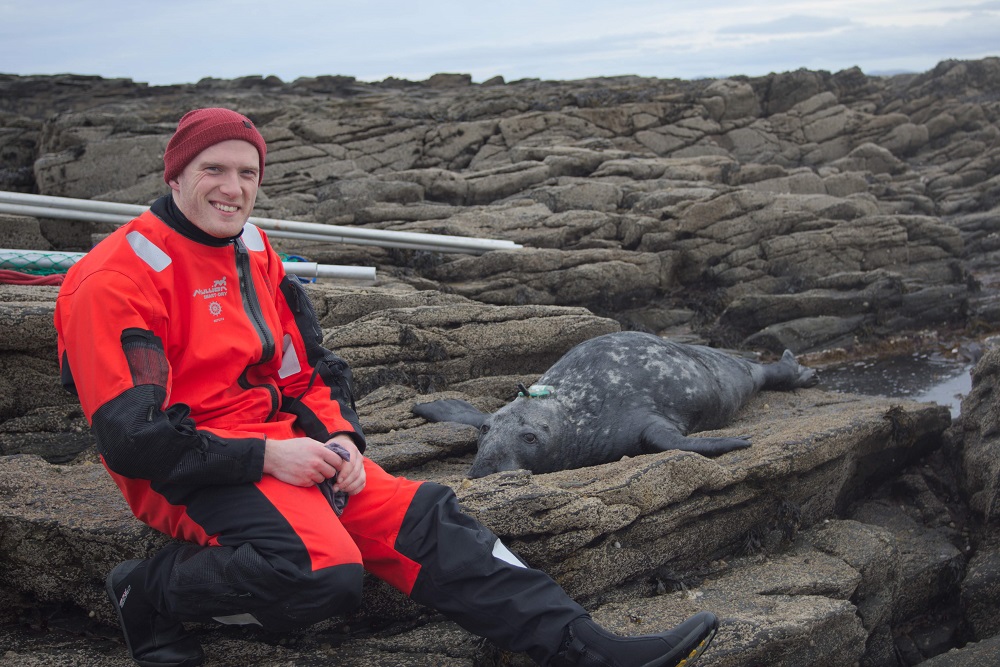
Indeed, so important that a collaborative research team – led by Cian – recently fixed extremely hi-tech GPS trackers to the heads of 10 grey seals from the Inishkea Islands, to monitor their movements and, ultimately, investigate what can be done to protect their population.
“By tracking the seals and other animals to see where they go, it gives us an idea of what the animals are doing at sea but, also, what part of the seas we need to protect and focus on for conservation,” explains Cian.
Cian’s research fieldwork has taken him to a range of exotic locations, from Antarctica to the Galapagos Islands. This, combined with his undergraduate degree in Zoology, and research masters in seal diet has equipped him with a unique expertise and insight into the creatures.
“I previously worked with the British Antarctic Survey. They sent me to a small research station on Bird Island, South Georgia, which is a thousand miles from anywhere,” he recalls.
“I lived and worked there for a year-and-a-half, with only three other people for most of that time, and thousands upon thousands of seals, albatross and penguins.”
Earlier this month, researchers from #MaREI, @uccBEES and @_SMRU_ fitted 10 grey seals from the Inishkea Islands with GPS tracking technology, as part of a study on seal-fishery interactions. This map shows how far these incredible animals have travelled! pic.twitter.com/TCUPw0yn62— MaREI (@MaREIcentre) April 24, 2019
It was during this Antarctic adventure that Cian gained a real insight into not only the life of the seal but also one of the other big threats it faces: pollution. Don’t be fooled by the picturesque images of crystal clear water and pristine snow that are synonymous with the Antarctic; pollution is wreaking havoc with natural life in the area.
“We would often come across seals that were wrapped in packing bands or rubbish, and we’d spend quite a lot of time unravelling them,” says Cian.
“It was hard to see, because often these seals had been entangled this way for years, as pups, and had grown into it. So, it gets quite horrific.
“Even in such a remote environment like that, we would do a beach clean every month. It was thousands of kilometres from anywhere, but even there you would find household rubbish – things that came off boats, stuff that had been chucked out. Plastics and rubbish are absolutely everywhere.”
The experience – plus another stint spent studying sea lions in the Galapagos – means Cian is uniquely positioned to help in identifying best conservation practice for Ireland’s seals.
"Because seals are reliant on everything that happens underneath them, by studying them we can actually get an idea of how well the entire ecosystem is doing" - Cian Luck
The data gathered from his latest research project, involving the GPS tracking of grey seals, will ideally help to answer key questions: how seals are getting into fishing nets, how often they are getting caught, and what can be done to prevent this.
Working closely with fishermen, Cian and the team are looking at key factors such as where the seals are travelling to in relation to fishing boats, and where the seals may be at risk of getting caught in nets. The next step is to feed that information back to relevant authorities – with whom they are in frequent dialogue – in order to help conservation efforts and have maximum research impact.
“We engage with fishing organisations, like the Inshore Fishery Forums,” explains Cian, “and we also produce reports for Bord Iascaigh Mhara.
“Our remit is to gather the information and put it out there, and deliver it to the policy-makers so they can make the best, most-informed decisions.”
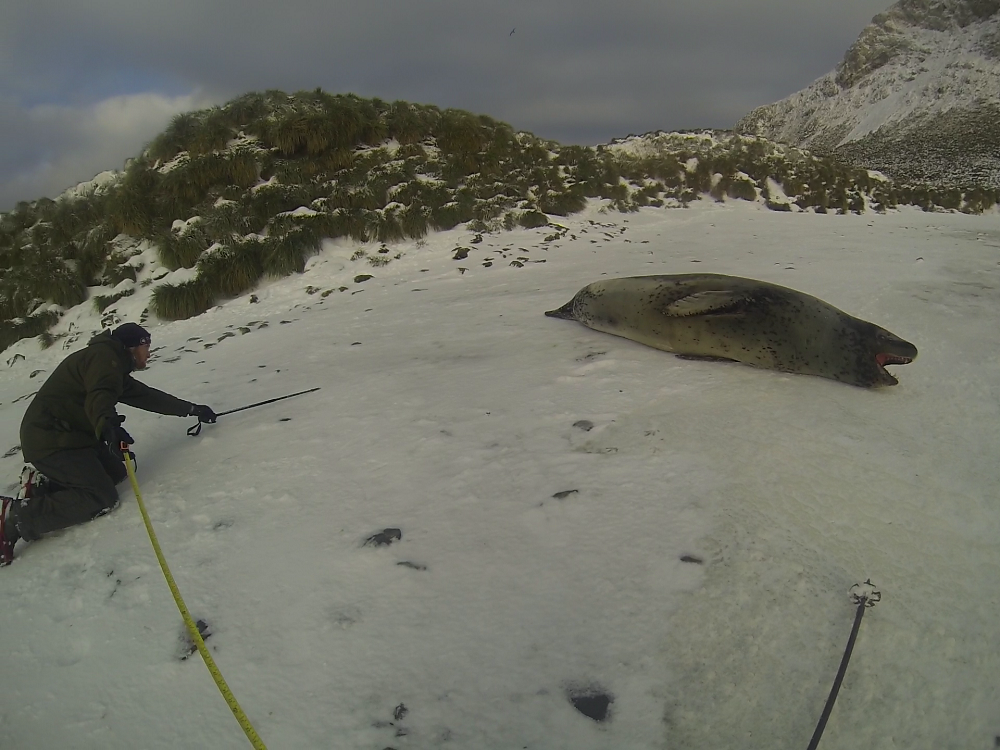
Judging by the latest data, this dialogue is already proving invaluable for seal conservation efforts in Ireland.
“The data I collected has shown that fishing boats that fish very close to major seal colonies are much more likely to catch seals. That seems obvious, but it’s quite useful to know because then we can start making some really clear management decisions, like excluding fishing up to a certain distance in an area where there are concerns about seal bycatch,” explains Cian.
“It also seems that when the water clarity goes from very clear to very murky, the seals simply can’t see the nets and are more likely to get caught themselves, and swim into them by accident. So, if we could come up with a way that would make the nets more visible to the seals, then that might be a very quick and easy way of reducing seal bycatch.”
As the Inishkea Island seals continue their journey, we’ll be watching this space.
Follow this link for more information about research at MaREI.

